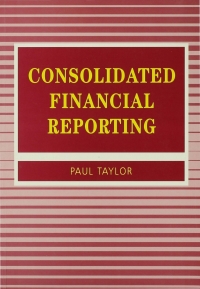
Wise Owl Corp (parent) is preparing its 2018 consolidated financial statements. Which of the following would require consolidating entries for intercompany transactions? (All transactions occurred in 2018. Assume all transactions gave rise to a material profit/gain for the selling entity, and the purchasing entity still holds the asset at the end of 2018.) O a. Sub WHO (wholly owned by Wise Owl) sold inventory to Sub MMM (90% owned by Wise Owl) O b.Joint venture JJJ (40% owned by Wise Owl), sold land to Sub WHO (wholly owned by Wise Owl) O c. Sub WHO (wholly owned by Wise Owl) sold land to Wise Owl (parent) O d. All of the above QUESTION 7 Assume Starbucks (parent) uses the equity method for its pre-consolidation bookkeeping, and had an intercompany sale of inventory to a 100% owned subsidiary that gave rise to $87,000 in gross profit. (Also assume the sub still holds the inventory.) What is the equity-method entry Starbucks would make to defer the gross profit? O a. Dr. Cost of Goods Sold $87,000; Cr. Sales $87,000 O b. Dr. Inventory $87,000; Cr. Equity Income $87,000 O c. Dr. Equity Income $87,000; Cr. Equity Investment $87,000 d.Dr. Equity Investment $87,000; Cr. Equity Income $87,000 QUESTION 8 While intercompany sales are typically a "zero-sum* game (i.e., in essence, just moving assets "from one side of the room to the other"), what is a strategy employed by some companies to create positive economics from an intercompany transfer? O a. an international intercompany transfer from an entity in a tax jurisdiction with a particular income tax rate to an entity in a tax jurisdiction with a differing income tax rate O b. "side-stream" transfers (from one sub to another sub), which, by their nature, create positive economics O c. intercompany sales of inventory at a higher gross profit rate than what is experienced when selling to non-affiliates O d. keeping obsolete inventory continuously in transit (the moment it arrives at one entity, it is shipped to another affiliate), so auditors cannot easily detect it's obsolete Wise Owl Corp (parent) is preparing its 2018 consolidated financial statements. Which of the following would require consolidating entries for intercompany transactions? (All transactions occurred in 2018. Assume all transactions gave rise to a material profit/gain for the selling entity, and the purchasing entity still holds the asset at the end of 2018.) O a. Sub WHO (wholly owned by Wise Owl) sold inventory to Sub MMM (90% owned by Wise Owl) O b.Joint venture JJJ (40% owned by Wise Owl), sold land to Sub WHO (wholly owned by Wise Owl) O c. Sub WHO (wholly owned by Wise Owl) sold land to Wise Owl (parent) O d. All of the above QUESTION 7 Assume Starbucks (parent) uses the equity method for its pre-consolidation bookkeeping, and had an intercompany sale of inventory to a 100% owned subsidiary that gave rise to $87,000 in gross profit. (Also assume the sub still holds the inventory.) What is the equity-method entry Starbucks would make to defer the gross profit? O a. Dr. Cost of Goods Sold $87,000; Cr. Sales $87,000 O b. Dr. Inventory $87,000; Cr. Equity Income $87,000 O c. Dr. Equity Income $87,000; Cr. Equity Investment $87,000 d.Dr. Equity Investment $87,000; Cr. Equity Income $87,000 QUESTION 8 While intercompany sales are typically a "zero-sum* game (i.e., in essence, just moving assets "from one side of the room to the other"), what is a strategy employed by some companies to create positive economics from an intercompany transfer? O a. an international intercompany transfer from an entity in a tax jurisdiction with a particular income tax rate to an entity in a tax jurisdiction with a differing income tax rate O b. "side-stream" transfers (from one sub to another sub), which, by their nature, create positive economics O c. intercompany sales of inventory at a higher gross profit rate than what is experienced when selling to non-affiliates O d. keeping obsolete inventory continuously in transit (the moment it arrives at one entity, it is shipped to another affiliate), so auditors cannot easily detect it's obsolete







